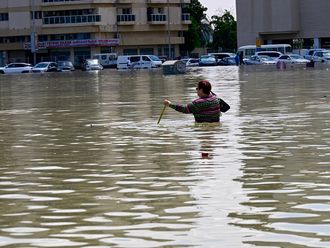Dubai: Improved sources of drinking water are still out of reach for more than 748 million people around the world, a new UN report suggests.
Almost a quarter of them still have to depend on untreated surface water to quench their thirst, says the 2014 update to the Joint Monitoring Programme for Water Supply and Sanitation.
“If current trends continue, there will still be 547 million people without an improved drinking water supply in 2015,” the report warns.
The worst faring areas are in sub-Saharan Africa.
In a press note, UN officials said not enough has been done to bring quality drinking water within the reach of the most vulnerable groups – children and the rural poor.
“Poor sanitation and contaminated water are linked to transmission of diseases such as cholera, diarrhoea, dysentery, hepatitis A, and typhoid. In addition, inadequate or absent water and sanitation services in health-care facilities put already vulnerable patients at additional risk of infection and disease,” the note said.
“The vast majority of those without improved sanitation are poorer people living in rural areas. Progress on rural sanitation — where it has occurred — has primarily benefitted richer people, increasing inequalities,” Dr Maria Neira, WHO Director for Public Health, Environmental and Social Determinants of Health, was quoted as saying.
“Too many people still lack a basic level of drinking water and sanitation. The challenge now is to take concrete steps to accelerate access to disadvantaged groups.
“An essential first step is to track better who, when and how people access improved sanitation and drinking water, so we can focus on those who don’t yet have access to these basic facilities,” she added.











